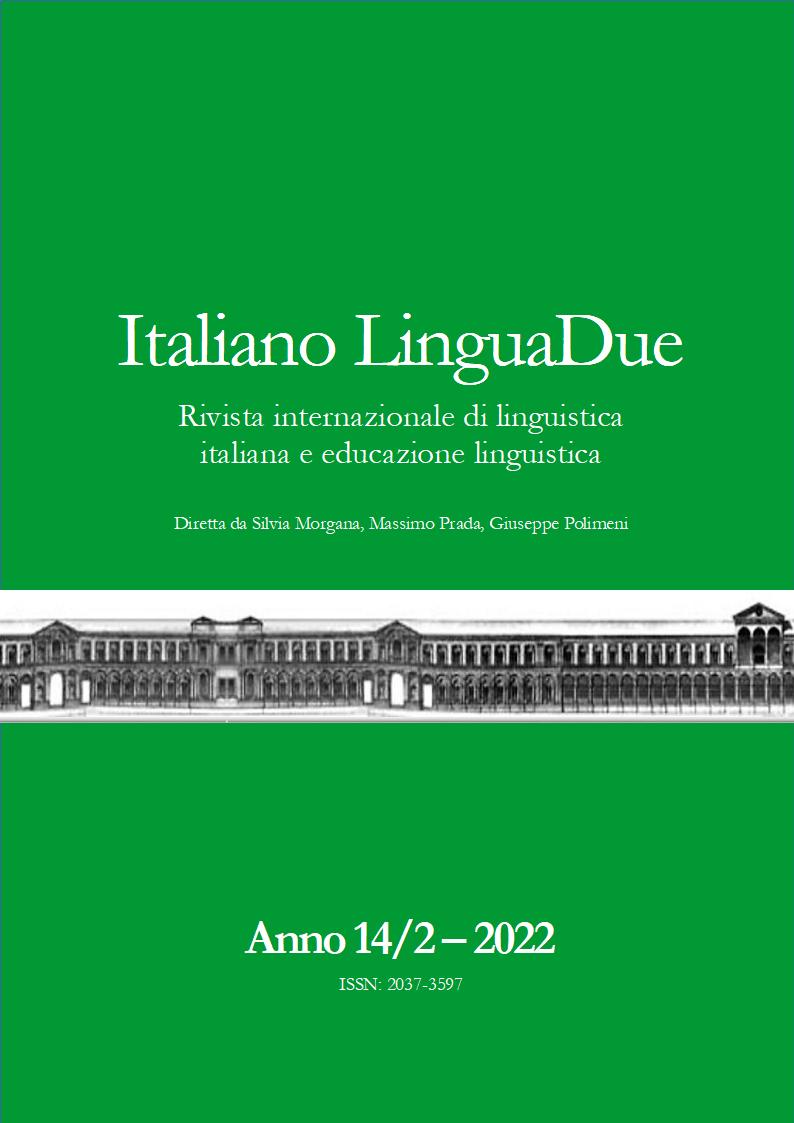DAL VOLUME COMPLEMENTARE ALLE PIATTAFORME DIGITALI: I TESTI NEOMEDIALI NELL’EDUCAZIONE LINGUISTICA. IL CASO DI YOUTUBE
DOI:
https://doi.org/10.54103/2037-3597/19607Abstract
Il contributo inquadra le caratteristiche dei testi multimodali a partire dal concetto di mediazione testuale, che assume, nel Volume complementare al QCER, un rilievo particolare. Sostiene che i testi neomediali sono prodotti e consumati in un ambiente semioticamente ricco che fa assumere alle pratiche di mediazione un’importanza particolare; sottolinea il ruolo fondamentale di strumento mediazionale per eccellenza del linguaggio verbale (ruolo già riconosciuto dal QCER) nei contesti modalmente ricchi; e rileva come la co-costruzione del senso appaia particolarmente importante nell’uso e nella produzione dei testi multimodali telematici, specie negli ambienti “sociali”. Questi, infatti, sono intrinsecamente cooperativi e in essi le operazioni di transmodalizzazione sono indispensabili sia per l’interpretazione del testo, sia per la produzione di testi nuovi (mediante, ad esempio, le pratiche di mashup e remix). Il contributo suggerisce, quindi, il vantaggio di impiegare il concetto di mediazione e la struttura scalare del Volume complementare QCER anche nell’analisi dei testi neomediali: sostiene che si tratti di un’operazione utile anche a fini didattici, perché consente di misurare le competenze e di creare sillabi per farle acquisire. Propone, infine, la lettura e l’analisi di alcuni testi multimodali telematici al fine di farne rilevare i tratti caratterizzanti e per renderne possibile una descrizione formale che consenta di delineare livelli di competenza nel loro uso.
From the Companion volume to digital platforms: neo-media texts in language education. The case of YouTube
The article frames the characteristics of multimodal texts starting from the concept of textual mediation, which assumes particular importance in the Companion Volume to the CEFR. It argues that neo-media texts are produced and consumed in a semiotically rich environment which gives mediation practices a particular importance; it underlines the fundamental role of verbal language as a mediation tool par excellence (a role already recognized by the CEFR) in modally rich contexts; and it notes how the co-construction of meaning appears particularly important in the use and production of online multimodal texts, especially in “social” environments. These, in fact, are intrinsically cooperative and in them the operations of transmodalization are indispensable both for the interpretation and for the production of texts (through, for example, the practices of mashup and remix). The contribution therefore suggests the advantage of using the concept of mediation and the graded structure of the CEFR Companion Volume also in the analysis of neo-media texts: it claims that it is a useful operation also for educational purposes, because it allows to measure skills and to create syllabuses to make them acquire.Finally, it proposes the reading and analysis of some online multimodal texts in order to highlight their characterizing features and to make possible a formal description that allows to outline levels of competence in their use.




